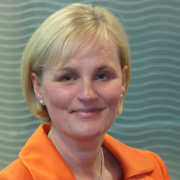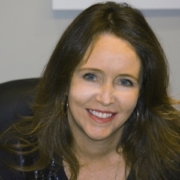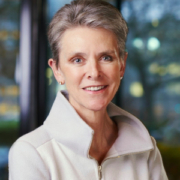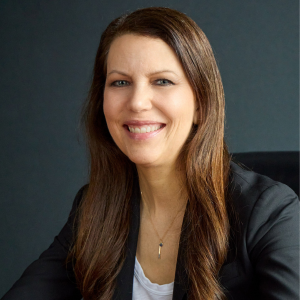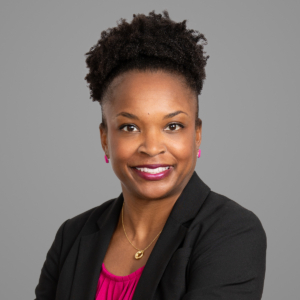Op-Ed: Reshaping the Work Landscape – Women’s Work and the Longevity Revolution
 Leadership succession is key to project a company forward. Identifying and training new leaders is essential to diversify and spur healthy and creative growth. At the same time, it is critical to ground succession solidly on the acquired experience of older leaders: their knowledge, practices, criteria, ideas, values, and vision.
Leadership succession is key to project a company forward. Identifying and training new leaders is essential to diversify and spur healthy and creative growth. At the same time, it is critical to ground succession solidly on the acquired experience of older leaders: their knowledge, practices, criteria, ideas, values, and vision.
As leaders, we focus on the company’s interests, and we are committed to the transition process. But it is not easy. Transitioning out of a strong leadership job can be difficult. We love what we do; we know how to do it; we do it well; we have energy. So, we train, we mentor, we transfer, we give power away – and then, we unconsciously may take it back, here and there. It is a struggle, because – as in any transition – emotions arise: the fear of losing relevance, power, purpose. We are excited about what succession opens for others, but we also need to get excited for what the transition brings for us.
Introspecting is necessary to envision a new purpose. Purpose ignites; but it takes time to mature. Consider:
- Ways to Transfer Value: How to transmit the technical, managerial, creative, or leadership capital we have? Can “transfer methods” – coaching, writing, speaking, training, teaching – become a path to new leadership?
- New Opportunities Within: What is possible now that was not possible before, within our organization? Can we cross-discipline, create new paths, develop unused skills to open new opportunities?
- Explore New Enterprise: Is it time to depart in order to focus on long-held ideas that never had their time before? Enterprising anew around services, products, ideas, people.
- Time to Re-Frame: A gap-time to follow curiosity may help re-frame and re-wire in new directions that may not be visible in the heat of transition.
As we explore, life may feel fragmented; gaining clarity is a process. A third party can be helpful in facilitating introspection and help us redirect our energy and strengths from what we are leaving to what is ahead.
Typically, a company’s succession plan focuses on grooming the upcoming leaders through mentoring, coaching, training – but rarely puts focus on the above re-invention strategies or coaching for leaders who are transitioning out of their roles. There is an underlying assumption that they should figure it out on their own (aren’t they leaders?) or that they will simply disappear, retire. This is old thinking, a 20th century mentality of an 85-year life cycle of Learn-Work-Retire.
We need new thinking about the work cycle: a longevity revolution is taking place.
The global population over age 60 is growing at an unprecedented pace: from 1 billion in 2019, it is estimated to grow to 1.4 billion in 2030 and to 2.1 billion in 2050. High income countries lead this trend: people over 65 are now 30% in Japan, 24% in Italy, 23% in Finland, and 17% in the US. The fastest growing age-group is people over 75, and the second fastest, centenarians. People in their 60’s today, have over a third of their life ahead! My own father, aged 102, is an amazing centenarian, independent, public speaker, learner, friend, traveler, partner. And this phenomenon is even more relevant for us women: we tend to live longer than men; in 2024, a whooping 78% of all centenarians are women.
Not only do women live longer; many women still earn less, comparatively; women may have slowed down work during childrearing years or may be responsible for parents who live longer too, resulting in less overall accumulated resources and wealth. We, women live longer, but we also need to work much longer.
Many older women are still shown or insinuated the door, but the landscape is changing. Women over fifty-five has been the fastest-growing age segment in the workforce. In contrast, the number of men over fifty-five working is projected to decline by 3 percent.
In 2021, Forbes launched its first yearly “50 over 50”, a selection of female leaders in their 50’s, 60’s and beyond, who are making it happen – creators, entrepreneurs, scientists, leaders, CEOs. Natalie de Vries, selected as a leader in my own field of work (architecture) said: “Visibility for women in architecture is crucial to improving equality in our profession.”
How can we support women rising to executive level and then beyond? Below are some key strategies, further developed by Carson College of Business and Harvard Business Review:
- Mentor & Sponsor: Support talented females; share, guide, meet.
- Hire with Focus on skills, whoever has them.
- Deepen Networks: Interact, connect, enrich mutual networks. Connections are crucial for growth.
- Intentional Training: Provide talented women with the management tools they need to rise and succeed; even more so to women in fields that traditionally do not educate on management.
- Creative Collaborations: Intergenerational, cultural, and thinking-style diversity provokes new thinking and creative solutions. It also breaks stereotypes we may carry about age groups.
- Visibility: Public speaking, writings, awards, and public expressions of Thought Leadership
- Add Women to Corporate Boards: Executive diversity has shown to correlate with financial health. Role models will inspire other women to reach and achieve.
- Cultivate Identity: With growth and age, cultivate a broad identity to include talents, skills, experience, interests, and passions. A broad identity (personal brand) can be instrumental to open future paths.
Women in their 50’s and beyond may have their best working years ahead: with family mission completed, they are highly experienced and driven. They tend to be more team and company focused than self-focused. A study by McKinsey reveals a correlation between gender diversity at executive level and financial performance.
The future of women’s work is also influenced by the tightening labor markets in developed nations, given their declining populations. Companies will be driven to retain their older talent and leaders, who were traditionally transitioned out. This is an emerging imperative for business and illuminates a new angle to diversity.
Myself, l love to work, and I am proud to be a role model for women in the workplace. We are the first generation of women working past our 60’s, changing old age narratives in society, in companies, and within ourselves. We are open to reboot, redirect, recreate, but we have no role models ahead of us. Here we are again, a generation leading how women work. We trailblazed before; we can trailblaze again.
Age offers enormous potential – accumulated knowledge, techniques, wisdom, insights, stories, relationships, ability to ideate, manage, mentor, and speak up. We can continue contributing to companies or to the world as leaders, strategists, problem-solvers, creatives, coaches, speakers, or storytellers. It is up to us to continue to make ourselves visible and relevant, for us, and for the women coming up after us. Soon, they’ll be sixty too.
We summon the courage to reinvent ourselves again and again. We tap into our next superpower – our age.
By Liora Haymann, Managing Director, OBMI International
(Guest Contribution: The opinions and views of guest contributions are not necessarily those of theglasshammer.com).

